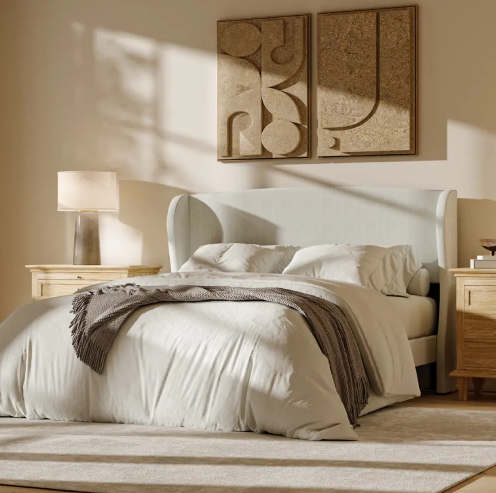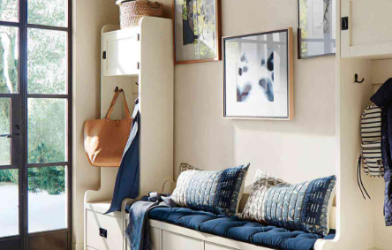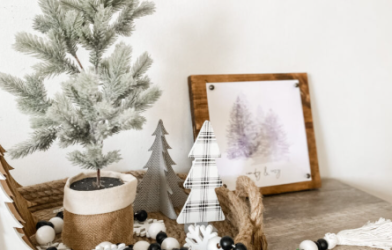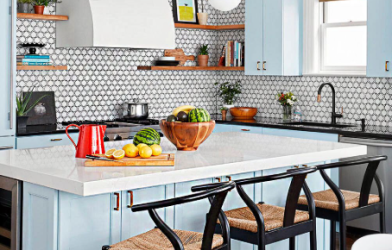Subtotal $0.00
Creating a personalized bedroom doesn’t require sticking to a set of matching furniture. In fact, the magic lies in mixing various furniture pieces, playing with textures, and designing a space that speaks to your individuality. In this blog, I’ll share practical ideas for mixing and matching bedroom furniture to help you create a cohesive and stylish sanctuary.
Why Mixing Furniture Works
A bedroom that feels like it has been thoughtfully curated over time is often more inviting than a perfectly coordinated set. While a matching furniture set can create a uniform look, it might miss that cozy, lived-in charm. By combining different textures, colors, and materials, you can make your space feel richer and more dynamic. It’s about telling a story where each furniture piece contributes to the overall aesthetic.
Start with the Bed: Your Room’s Focal Point
The bed is the central element of your bedroom, and it naturally draws attention. A modern bed frame with clean lines can act as a strong anchor for the room. From here, you can introduce contrasts, like pairing a minimalist bed with a vintage dresser, or combining dark wood nightstands with a neutral headboard.
For a bold move, you can incorporate accent colors through your bedding or by adding a standout headboard. The bed will guide the rest of your design choices, so start with this key piece and build the room around it.
Use a Color Scheme to Tie Everything Together
After deciding on the bed, establish a calming color foundation with neutrals like cream, gray, taupe, or white. Once you have that base, you can add complementary colors in accessories like throw pillows, rugs, or an accent chair. A pop of color can bring warmth and personality to the room, and repeating these tones throughout the space helps create harmony.
Balancing Different Styles
The key to mixing various furniture styles is balance. If you have a vintage piece, like a detailed dresser, balance it with a more modern element, such as a sleek bed frame or side table. Alternatively, pair modern furniture with something handcrafted, like a rattan chair or a rustic accent.
Another effective way to mix furniture is by playing with wood tones. A room with dark wood furniture can be softened by incorporating lighter oak pieces, creating a contrast that’s not overwhelming.
Layering Textures for Depth
Texture is an essential element that adds dimension to your space. If most of your furniture is wood or metal, introduce softness with fabric textures like velvet throw pillows, woven baskets, or a plush area rug. Layering textures creates a more dynamic and cozy feel. Try mixing materials such as quilted bedding with sheer curtains to add even more variety to your space.
Playing with Furniture Heights
To add a sense of depth and balance, mix furniture of different heights and sizes. For example, pairing a tall armoire with a low bench creates visual interest and gives the room a more layered look. In smaller rooms, varying the height of furniture pieces, such as bedside tables, can make the space feel more spacious and dynamic.
Incorporating Statement Pieces
Every bedroom needs a statement piece—a unique item that catches the eye. This could be a vintage dresser, a custom-built nightstand, or a bold upholstered bench. The key is ensuring the statement piece doesn’t feel out of place. Pull colors or textures from it and incorporate them in other parts of the room to maintain cohesion.
Finishing Touches to Personalize Your Space
Once the main furniture pieces are in place, focus on the smaller details to complete the room. These accents, such as throw pillows in different patterns, stylish lamps, an area rug, or artwork, are what make your bedroom feel truly personalized. Don’t overlook the little things—trays, books, plants, and decorative objects all add warmth and character to your room.
Breaking Up Matching Furniture Sets
While it’s fine to use matching furniture sets, don’t hesitate to break them up. For example, a matching set could be spread across different rooms or complemented with different accessories like bold lamps or a vibrant rug. This approach adds a fresh perspective while still keeping the room coordinated.
Shop for Essential Pieces First
When shopping for new furniture, start by investing in the essential pieces, like the bed and dresser. These are larger, more significant items that set the tone for the room. Afterward, you can mix in budget-friendly pieces from thrift stores, flea markets, or other affordable sources. The beauty of this approach is that you don’t have to buy everything at once. Take your time curating pieces that resonate with you.
Create a Mood Board to Visualize Your Design
If you’re feeling uncertain, creating a mood board can be a helpful tool for visualizing how different elements will come together. Include swatches of fabric, paint colors, and photos of furniture that inspire you. Seeing everything in one place helps you make confident decisions and ensures a cohesive overall look.
Example Bedroom Designs
Here are two bedroom designs that demonstrate the principles of mixing and matching:
- Vintage Warm Neutrals
This design combines vintage and modern elements to create a warm, inviting space. The upholstered bed contrasts beautifully with the vintage-inspired burl wood nightstands. The warm, neutral color palette with brass accents ties everything together, while a woven rug and ceramic lamps add texture. Statement artwork and tassel sconces further personalize the room, making it feel collected and curated. - Earthy Toned Elegance
This bedroom combines classic elegance with a rich, earthy color palette. The olive-toned bed pairs with black nightstands for a sophisticated contrast. A vintage-style rug anchors the space, and rattan and antique-inspired furniture pieces enhance the room’s timeless charm. Statement lighting, including green ceramic lamps and a brass chandelier, adds character and warmth, while botanical patterns introduce fresh, natural elements.
Conclusion
Mixing and matching bedroom furniture is about creating a space that reflects your personal style while remaining functional and cohesive. By thoughtfully blending textures, materials, and colors, you can design a bedroom that feels uniquely yours. Whether you’re drawn to vintage charm, modern elegance, or a mix of both, these tips will help you create a room that’s stylish, comfortable, and filled with personality.












